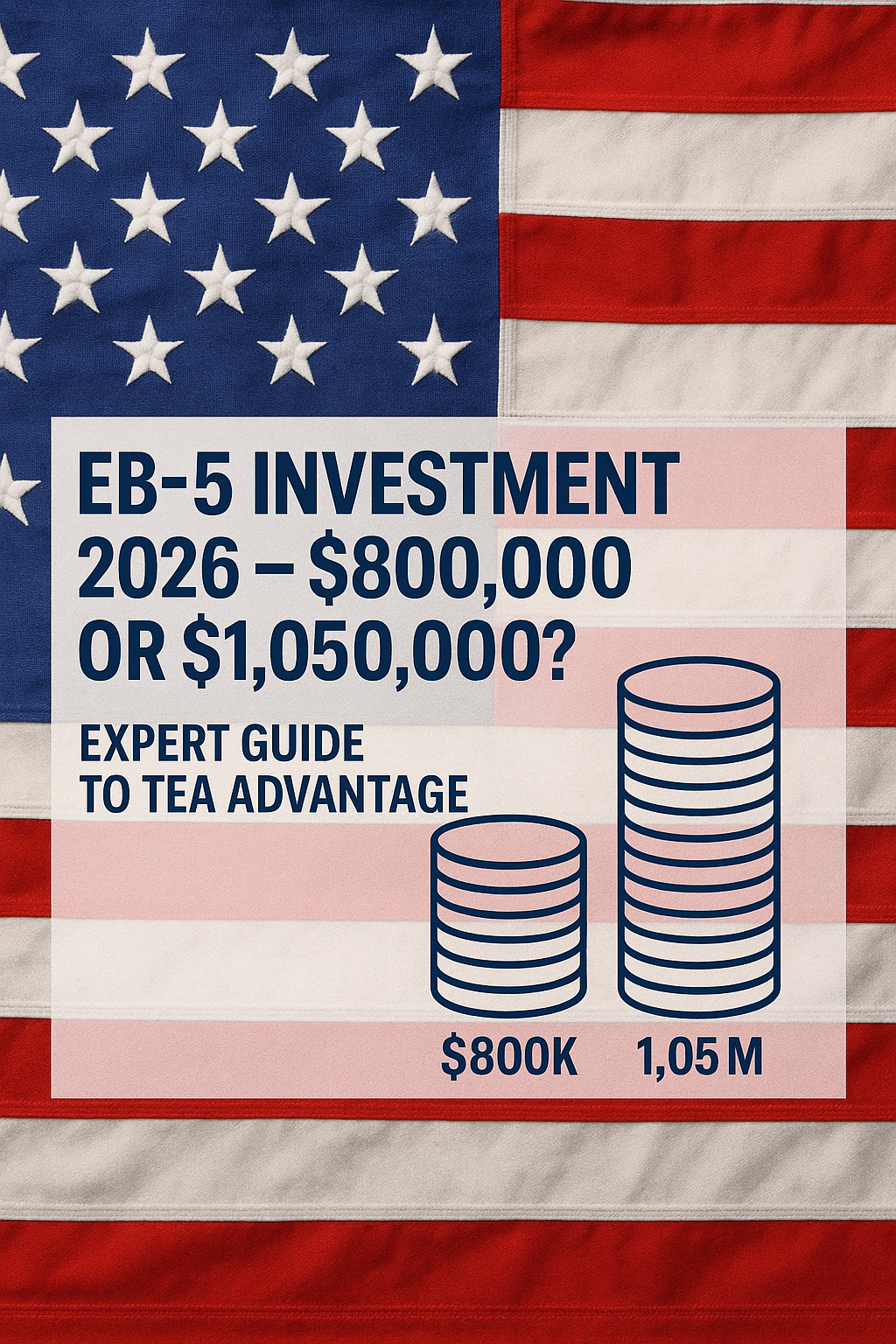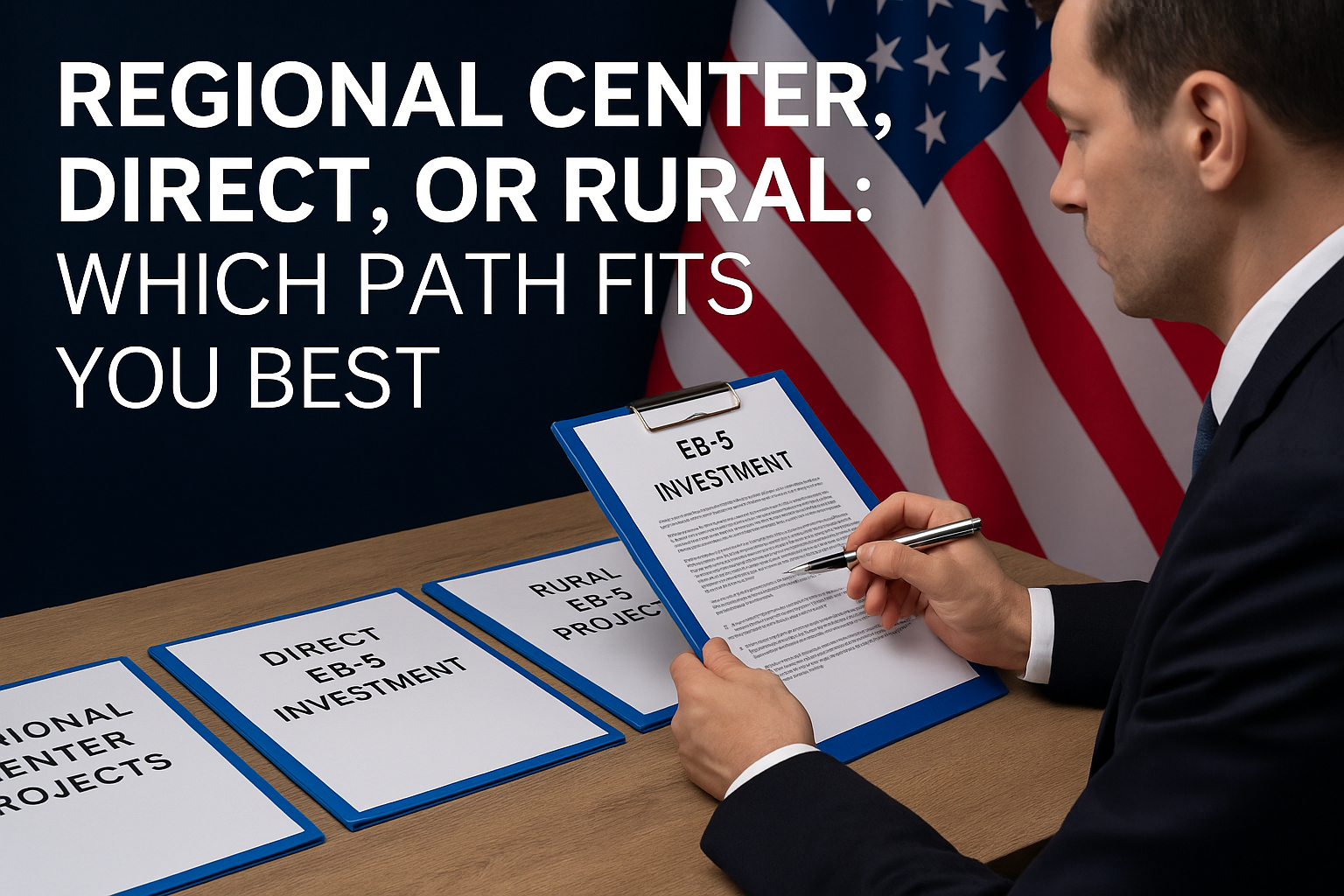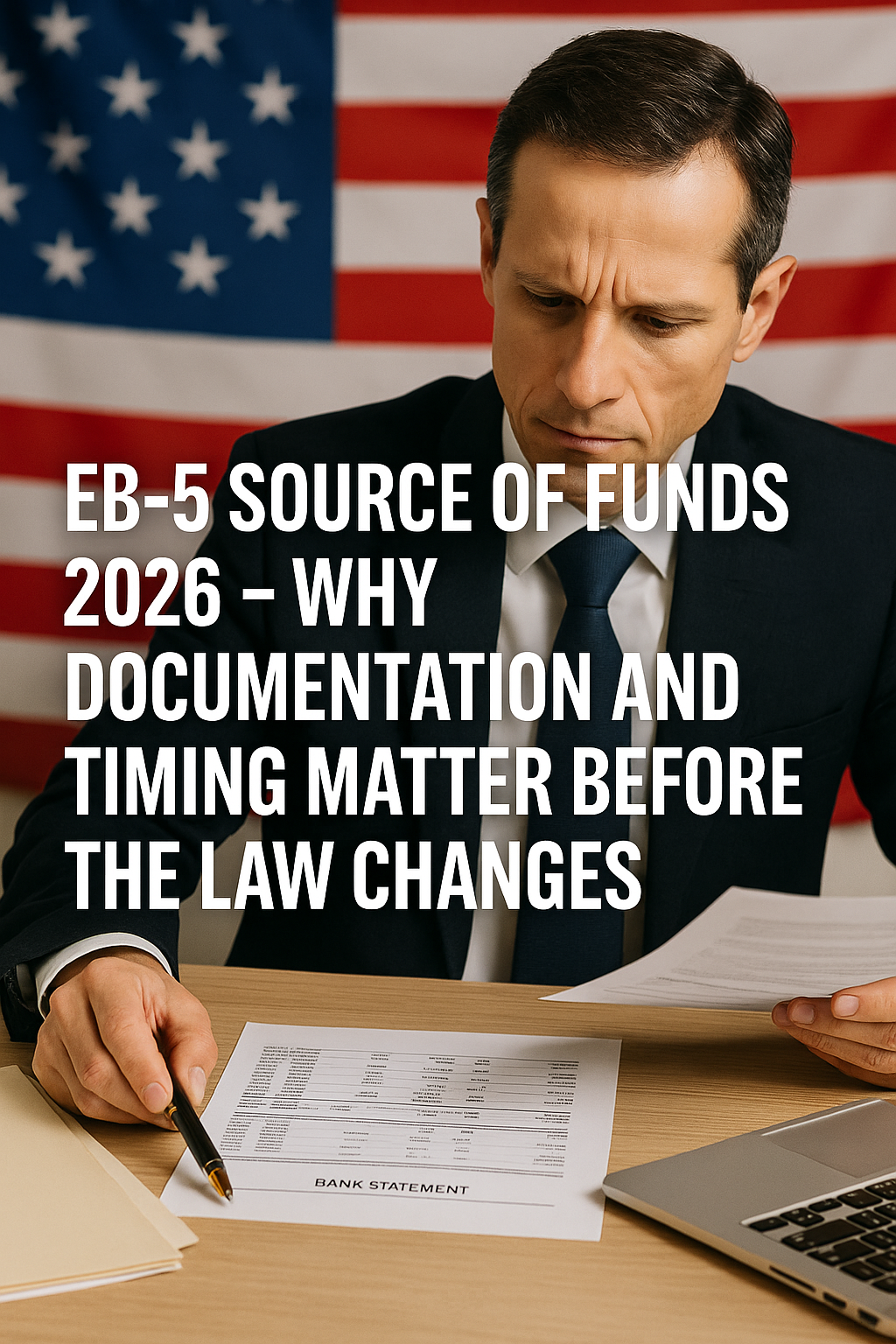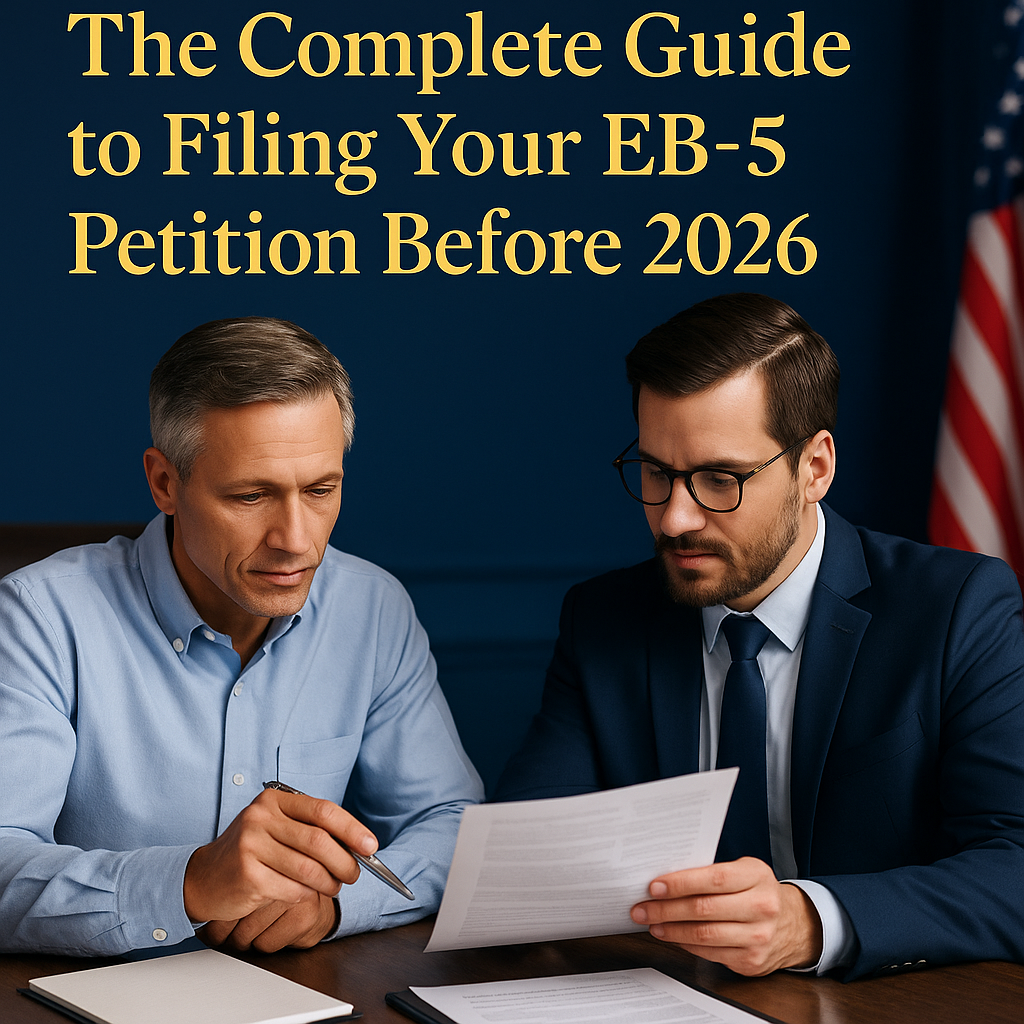The Foundation of the Current EB-5 Law
All EB-5 Visa applications filed today are governed by the EB-5 Reform and Integrity Act of 2022 (RIA), the law that revived and reshaped the EB-5 Regional Center Program after its lapse in 2021.
This legislation runs until September 30th,2026, setting the framework for every investor petition, capital investment, and Regional Center operation.
In practical terms, it means investors who file before the deadline are protected under the current EB-5 Law 2026, even if Congress changes the rules afterward.
What the EB-5 Reform and Integrity Act Actually Changed
Before 2022, the EB-5 Program operated with minimal federal oversight. The new Act transformed it into a modern, compliance-driven immigration investment system.
The law introduced:
- Defined investment thresholds — $800,000 for Targeted Employment Areas (TEA) and $1,050,000 for non-TEA.
- Mandatory annual registration for all Regional Centers with the U.S. Citizenship and Immigration Services (USCIS).
- Independent fund administration to ensure investor capital is properly used.
- Full disclosure of agents, promoters, and fees for complete transparency.
- Regular audits and site inspections by USCIS.
These reforms created what analysts now call “Institutional-Grade EB-5” — a system trusted by investors, developers, and regulators alike.
The Role of the EB-5 Regional Center Program
Under the EB-5 Law 2026, most investors file through a Regional Center, not direct investment.
Regional Centers act as federally designated entities that pool investor funds into job-creating projects such as hotels, infrastructure, or mixed-use developments.
Advantages of investing through a Regional Center:
- Indirect job creation counts toward the 10-job requirement.
- Professional management — investors aren’t required to run the business.
- Visa efficiency through pooled capital structures.
However, under the Reform and Integrity Act, only Regional Centers that have been redesignated and approved by USCIS can sponsor new investors.
Every legitimate project must show:
- A valid USCIS designation letter.
- Evidence of compliance filings (Form I-956).
- Clear fund flow through audited accounts.
Investor Tip: Ask for written confirmation of re-designation and annual compliance reports before wiring any funds.
Key Investor Protections Under the 2022 Act
The Reform and Integrity Act was designed to make EB-5 safer than ever before. It established new mechanisms that directly benefit investors:
| Protection | What It Means |
| Fund Transparency | Capital must pass through U.S. escrow or trust accounts. |
| Third-Party Monitoring | Independent fund administrators verify usage. |
| Annual Compliance Reporting | Regional Centers file detailed project data with USCIS. |
| Promoter Registration | All agents and brokers must be listed publicly. |
| Audit & Enforcement | USCIS can terminate non-compliant Regional Centers. |
Together, these provisions restore confidence and reduce the risk of mismanagement or misuse of investor capital.
Visa Set-Asides and Priority Processing
One of the most important sections of the EB-5 Reform and Integrity Act is the creation of visa set-asides — reserved Green Cards for specific project types.
| Category | Percentage | Investor Benefit |
| Rural Projects | 20 % | Priority processing and faster adjudication. |
| High-Unemployment TEA | 10 % | Easier qualification for a reduced investment amount. |
| Infrastructure Projects | 2 % | Supported by U.S. public agencies. |
For investors from Vietnam, India, and China — countries with visa backlogs — these reserved categories represent the fastest EB-5 path currently available.
The 2026 Deadline – Why It Matters
The EB-5 Law 2026 will remain unchanged only until September 30th, 2026.
After that date, Congress must either:
- Renew the program as-is,
- Increase investment amounts, or
- Temporarily suspend new filings for legislative review.
History suggests that renewal cycles often bring higher thresholds or temporary gaps.
Filing your EB-5 I-526E petition before the cutoff date secures your place under the current law — including today’s investment amounts and visa advantages.
Your Next Steps as an EB-5 Investor
- Verify your Regional Center’s re-designation status on the USCIS website.
- Select a TEA or rural project that meets both commercial and immigration goals.
- Prepare your source of funds documentation early — audits are stricter now.
- Consult a licensed immigration attorney familiar with RIA 2022 compliance.
- File before the 2026 deadline to lock in your benefits.
The EB-5 Reform and Integrity Act gives investors clear rules, but only for a defined period. Acting within this window ensures stability amid future policy changes.
Investor Takeaway
The EB-5 Program has entered its most transparent and reliable era.
The Reform and Integrity Act brought compliance, protection, and predictability, yet its current version is temporary.
Investors who understand and act within the EB-5 Law 2026 framework can secure U.S. residency under today’s rules before another policy shift reshapes the program again.
Part of The EB-5 Countdown Series 2026
The EB-5 Reform and Integrity Act defines today’s EB-5 Law 2026, bringing transparency, compliance, and investor protection to the U.S. Regional Center Program.
This version of the law expires September 30th, 2026, making now the time to act before investment amounts or regulations change.
Next Article → EB-5 Investment 2026 – $800,000 or $1,050,000? Expert Guide to TEA Advantage
Subscribe to The Immigration Magazine newsletter to receive the full series EB-5 2026 Guide and expert insights before the program’s renewal date on September 30th, 2026.












